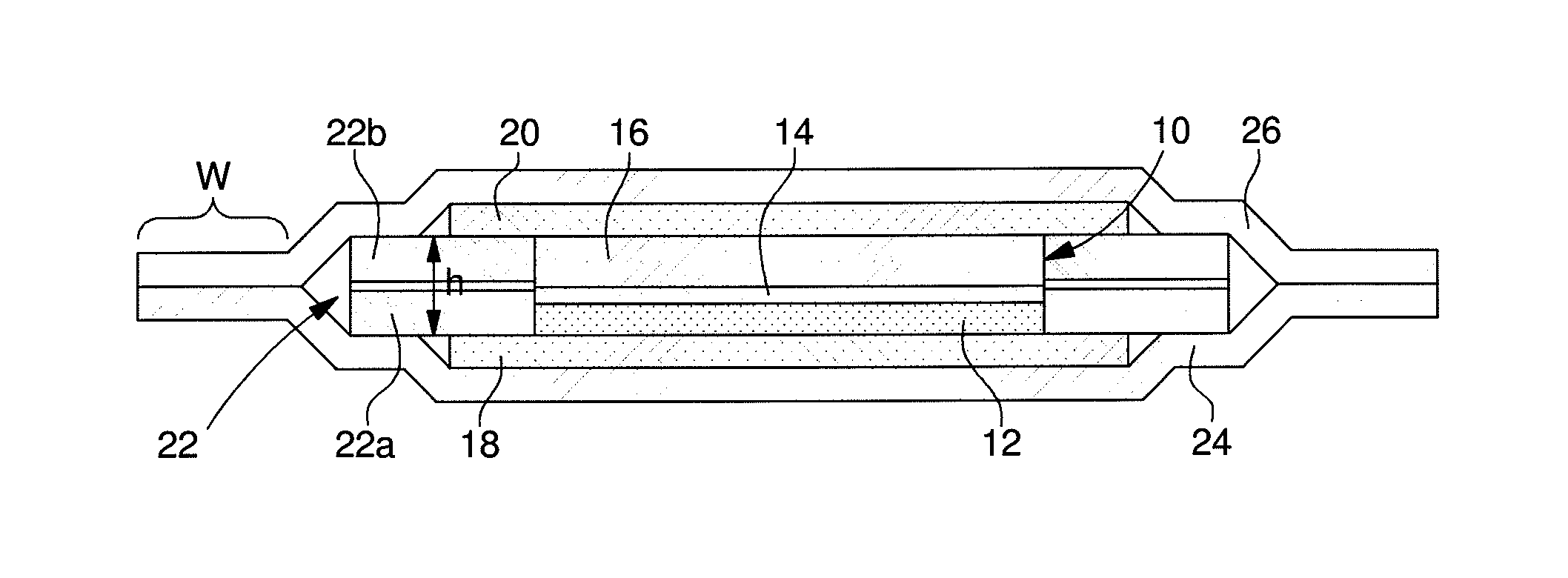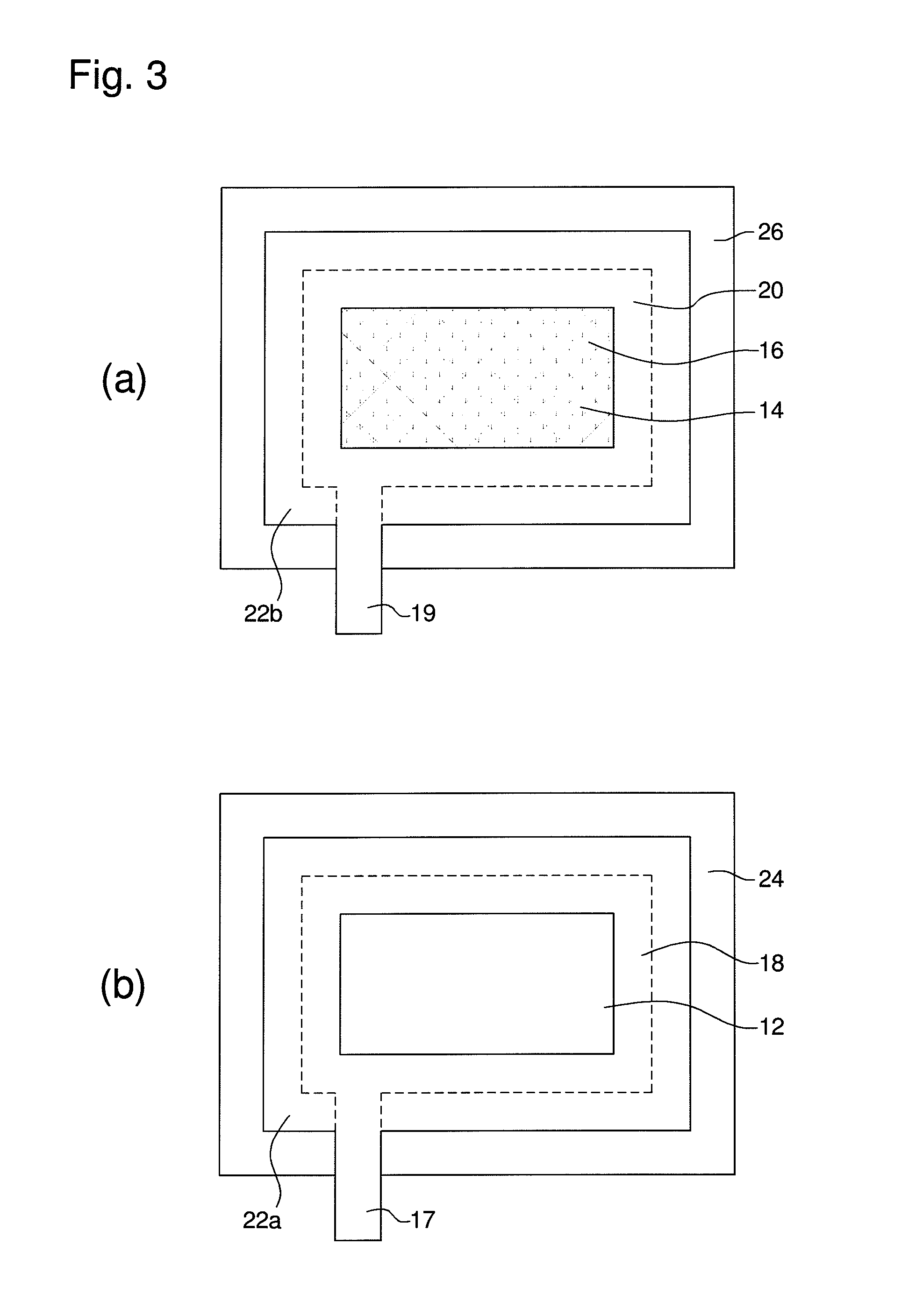Thin film battery
a technology of thin film and primary batteries, applied in the direction of non-aqueous electrolyte cells, cell components, sustainable manufacturing/processing, etc., can solve the problems of not fully satisfying the above described batteries, the need for thin batteries having flexible housings, etc., and achieve the effect of convenient battery assembly and easy to obtain certain desired surface properties
- Summary
- Abstract
- Description
- Claims
- Application Information
AI Technical Summary
Benefits of technology
Problems solved by technology
Method used
Image
Examples
Embodiment Construction
[0040]It will be appreciated that the following description is intended to refer to two specific embodiments of the invention which have been selected for illustration in the drawings but which are not intended to define or limit the invention, other than in the appended claims.
[0041]FIG. 1 shows a cross-section through a flat battery according to the invention, whereas FIGS. 3(a) and 3(b) each show a top view of a preassembled part of the flat battery shown in FIG. 1. More precisely, FIG. 3(a) shows the upper layers of the battery shown in FIG. 1, while FIG. 3(b) shows the lower layers of the same.
[0042]Referring to FIGS. 3(a) and 3(b), a method according to the invention to produce the battery as shown in FIG. 1 will now be described.
[0043]Firstly, the preassembly of the lower layers as shown in FIG. 3(b) will be described.
[0044]In a first step, a first rectangular polymeric sheet 24 being coated with a heat-sealable material on one side is provided. It should be noted that, altho...
PUM
| Property | Measurement | Unit |
|---|---|---|
| thickness | aaaaa | aaaaa |
| thickness | aaaaa | aaaaa |
| circumference | aaaaa | aaaaa |
Abstract
Description
Claims
Application Information
 Login to View More
Login to View More - R&D
- Intellectual Property
- Life Sciences
- Materials
- Tech Scout
- Unparalleled Data Quality
- Higher Quality Content
- 60% Fewer Hallucinations
Browse by: Latest US Patents, China's latest patents, Technical Efficacy Thesaurus, Application Domain, Technology Topic, Popular Technical Reports.
© 2025 PatSnap. All rights reserved.Legal|Privacy policy|Modern Slavery Act Transparency Statement|Sitemap|About US| Contact US: help@patsnap.com



